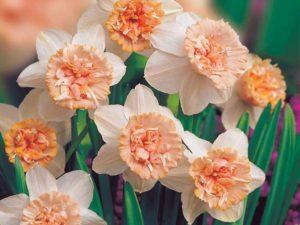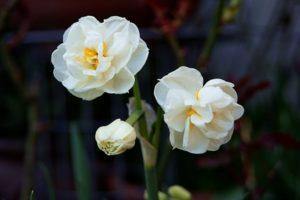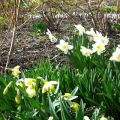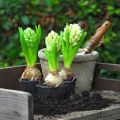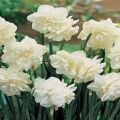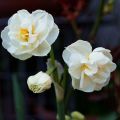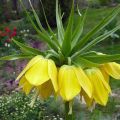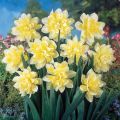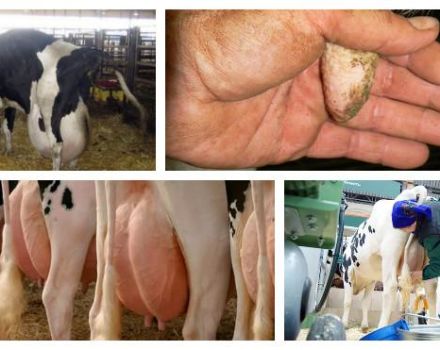When to transplant daffodils to another location, in spring or fall
In spring and early summer, the appearance of the curtain will tell you when to transplant the daffodils. In one place, they can grow up to 6 years. This is the maximum period. Usually, the bushes of the bulbous perennial are planted earlier. The reason is the decrease in the decorative properties of the plant, diseases, pests, redevelopment of the garden.
When do daffodils need a transplant?
Narcissus is a perennial bulbous plant. During the season, several new bulbs (babies) are formed. There are more of them every year. The average value of the multiplication factor of narcissus bulbs is 1: 4. There comes a moment when they feel cramped in the curtain. Gardeners will find out about the need for a transplant by external signs:
- the size of the flowers and the height of the bush are reduced;
- the buds dry up without blooming;
- leaves begin to turn yellow and dry early;
- flowering is poor.
The forced need for a transplant arises in 3-4 years.
Transplant goals
The transplant is carried out not only for the purpose of rejuvenating the bush. The daffodil bulbs are dug out for distillation. For this, certain large-flowered varieties with high peduncles are grown.
To obtain material for forcing, the bulbs are dug up annually.
An extra transplant is carried out if the plant does not bloom. Flower buds do not form when planting in an unfortunate place, due to freezing or diseases. Transplanting helps eliminate these problems and stimulates flowering.
Why autumn and not spring?
Daffodils belong to the group of ephemeroids - perennials with a short dormant period. It begins immediately after flowering, when the leaves die off. Lasts no more than 4 weeks. In most regions, the end of the dormant period occurs at the end of August.
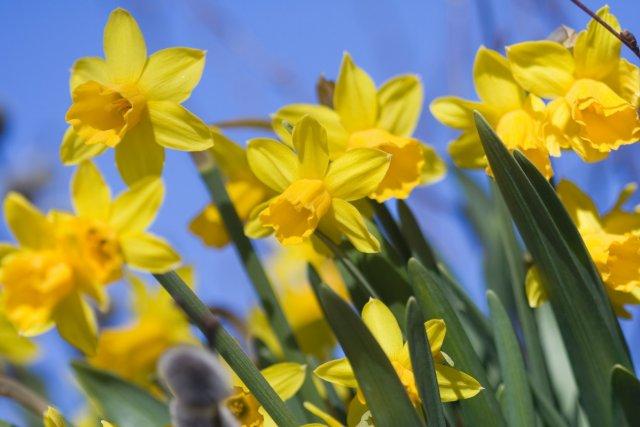
After 3-4 weeks, the plant begins a new period of activity, during which new roots grow. Therefore, it is the autumn transplant that is needed. It is impossible to delay with it. The second decade of September is the deadline for the middle lane. If planted later, the bulbs will not have time to root.
It takes 4 weeks to root the bulb... Spring planting gives poor results. It should be carried out when the soil warms up to 10 ° C. Before the heat, the roots do not have time to form. Therefore, flowering does not occur.
Nuances of the procedure
Caring for daffodils takes little time, which is why flower growers love this plant so much. Transplant is the most time consuming process. It is not difficult to master it.
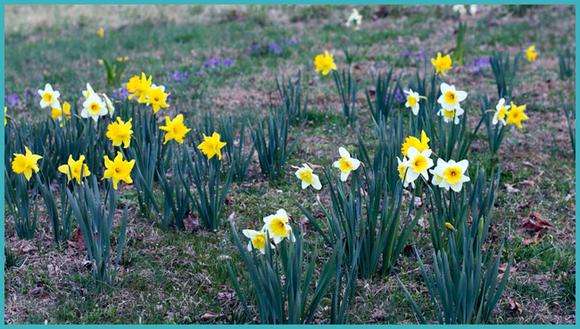
Transplanting flowering daffodils
If the bush blooms profusely, does not get sick, then it is transplanted to another place every 4 years. Sometimes a variety needs a more frequent change of location due to varietal characteristics. This is reported when purchasing a specific species. Large bulbs are planted in 15 cm increments, medium ones - 10 cm, small ones (children) - 7 cm.
Daffodil care after transplant
In autumn, the ridge is covered with a layer of mulch. For this purpose, they take peat, humus, crushed bark. If there is little snow in winter, the ridge is covered with lutrasil. In the spring, the shelter is removed. Urea granules are scattered over the surface of the earth.
From early spring to July, daffodils are regularly watered. Recommended water consumption 3-4 buckets per 1 m². Over the summer, at least 2 dressings with potassium-phosphorus fertilizers are carried out, before and after flowering.
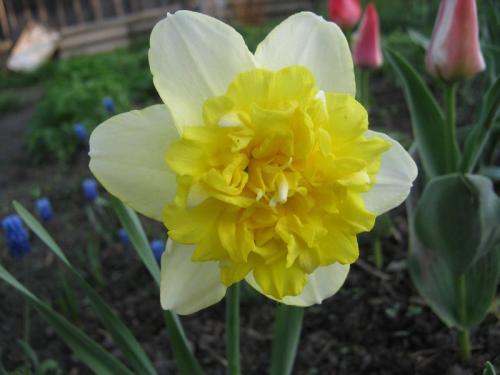
After watering, the soil is shallowly loosened, sprinkled with ash. It protects flowers from pests and serves as a fertilizer. It contains potassium and other beneficial trace elements. Weeds are regularly removed from the flowerbed.
When to not transplant daffodils
You can kill the bulbs if you transplant during flowering. All bulbous plants blooming in early spring are transplanted in autumn. Narcissists are no exception. A bulb transplanted in summer or late spring will simply sit in the ground without forming roots. At this time, pests or fungal infections can attack it.
You cannot dig a nest as long as the daffodil leaves are green and elastic. At least 6 weeks should pass from the moment of flowering. During this time, the bulbs accumulate nutrients, and flower buds form in them.
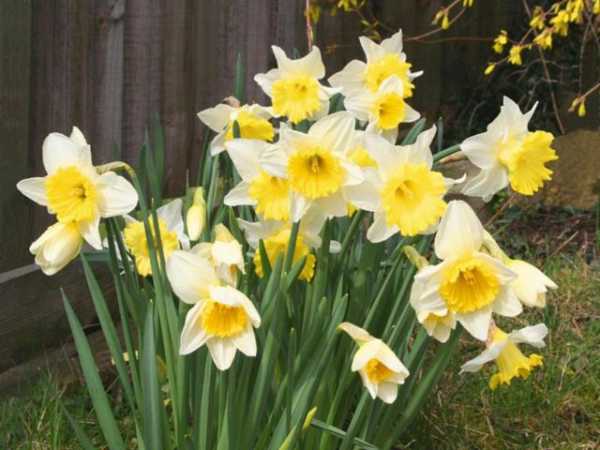
But even fully ripe specimens cannot be replanted in late autumn. They will not have time to take root. In the southern regions, the deadline is the end of September. In the regions of the middle lane, all work with daffodils must be completed before September 10-15. They are not transplanted in winter either.
Step-by-step transplant instructions
The transplant is started when the average daily temperature does not exceed 10 ° C. In bulbous plants, active root formation begins at a soil temperature of 9 ° C. The main conditions for a successful autumn planting of daffodils:
- roots have formed;
- the bulb did not start growing.
The flowering time and the rate of formation of children depend on the depth of planting. It is optimal to bury the bulb 3 times its height. When they want to achieve early flowering and a large number of children, the bulb is planted smaller.
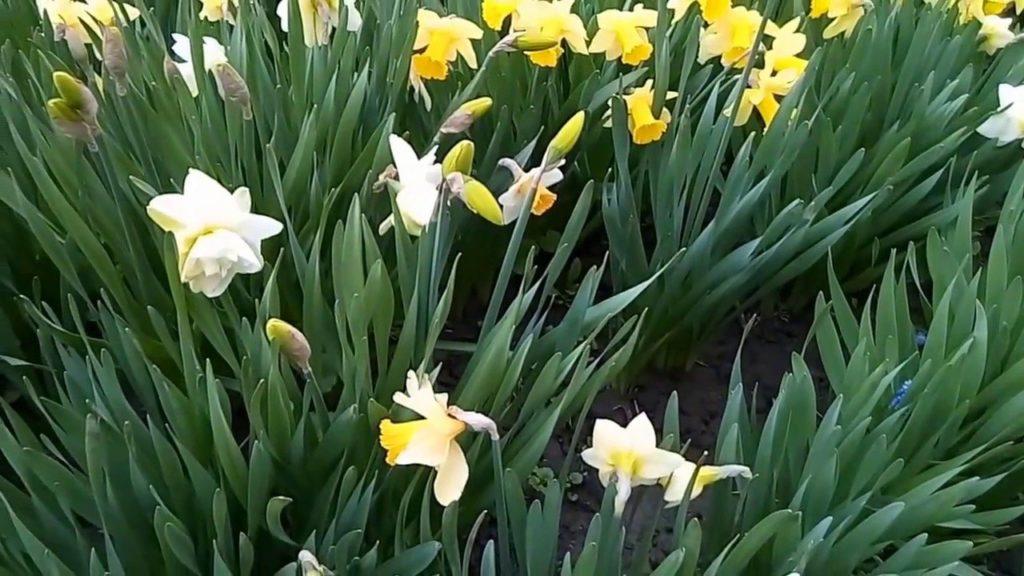
Choosing a place for transfer
In the garden, good predecessors to daffodil will be salvia, tagetis, phlox, delphinium. A perennial bulbous plant grows well in the sun and in partial shade. There are isolated varieties that need a lot of sunlight.
Most varieties need 3-4 hours of bright light. But in sunny areas, daffodils bloom more abundantly and longer.
Soil preparation
Daffodils need well aerated soils with a pH of 6-7 for optimal growth and development. They are very sensitive to the lack of potassium and phosphorus in the soil. When preparing the soil, do not apply fresh organic matter and fertilizers containing chlorine (potassium chloride).
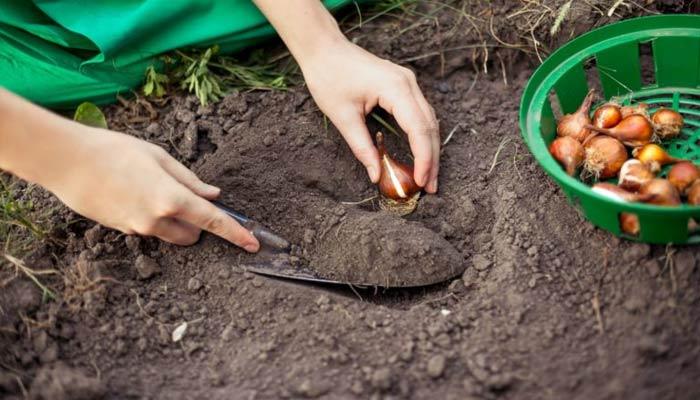
They dig up the soil in the flower bed. Humus and mineral fertilizers are introduced. Planting the bulbs is carried out according to a simple scheme. First, they dig a trench (hole) 20-25 cm deep. River sand with ash 5-7 cm thick is poured at the bottom. The bulbs are laid out, covered with fertile soil and watered.
How to prepare plants for transplanting?
It is impossible to delay the transplant. The leaves will wither, the bush may simply not be found. Dig the nest carefully. The blade of the shovel should be stuck in, slightly stepping back from the edge of the curtain, so as not to accidentally touch the bulbs.
They sit at a depth of 25-30 cm. The nest is taken out together with a clod of earth. Disassemble it into bulbs. They try not to damage the roots.Separated by hands, garden tools are used to remove the remnants of leaves. Soft, rotten and mechanically damaged specimens are subject to disposal.
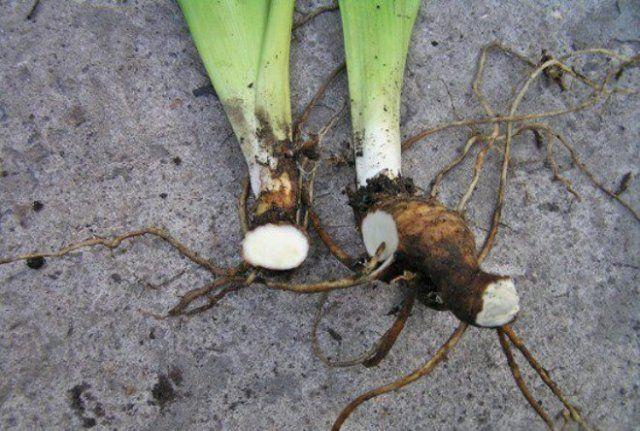
You can store babies and large bulbs without land for several weeks. They are disinfected in a manganese solution, dried, laid out in paper bags and taken to a dry, cool room. The recommended storage temperature is 13 ° C. Part of the nest can be left. After removing the required number of babies and bulbs, it can be returned to its original place. To restore fertility, mineral fertilizers are applied to the soil.
The main mistakes of novice gardeners
Delaying spring watering is the worst mistake. Daffodils need a lot of moisture at the very beginning of the growing season. Water abundantly at the very beginning of spring. Before that, urea or carbamide is scattered over the soil surface.
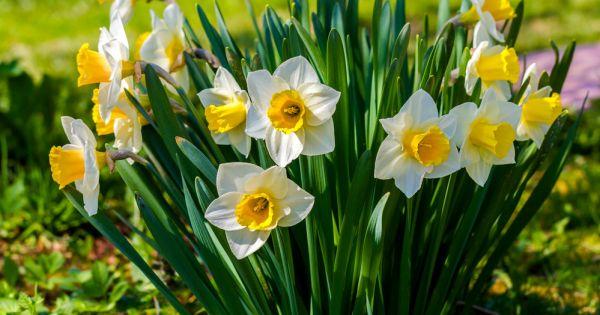
Many budding gardeners do not flower daffodils. The reasons for this:
- the bush has not been planted for a long time;
- the plant is affected by the daffodil fly.
For the prevention of narcissus flies, the bulbs are treated with a solution of "Karbofos" before planting. A delay in flowering and a small number of peduncles is due to a lack of potassium and phosphorus in the soil. Flower growers forget to water daffodils with a liquid solution of superphosphate and potassium sulfate in August.
In the garden, daffodils coexist well with tall flowering perennials and ornamental shrubs. It is worth planting several different varieties of bulbous perennials on flower beds. They will bloom at different times. The following varieties are popular with florists: daisy, cyclamen, terry.
